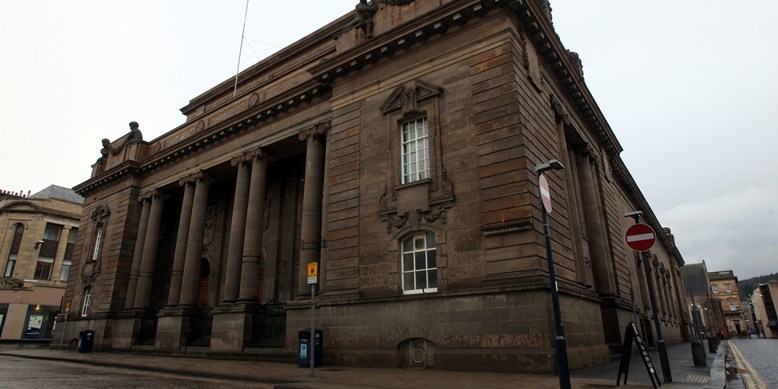The complete demolition of Perth City Hall with a civic square or public space in its place has emerged as Perth and Kinross Council’s preferred option for the disused Edwardian landmark.
The £3 million project has been deemed to be the most viable in the economic climate and the most beneficial in the long term. It will be voted on at a special council meeting on Thursday.
The future of the City Hall has been the subject of debate for years.
Private firm Wharfside was given permission to create a shopping centre on the site in 2005 but, despite numerous promises and false dawns, the company was finally removed from the project last summer.
The council put the issue back to consultation and five options were considered:Do nothing/do the minimum and leave City Hall as it is until the economic climate improves. Re-use the City Hall building for another purpose. Partially demolish the City Hall building to create a new small public space and keep part of the building. Fully demolish the City Hall building and create a civic square/public space. Fully demolish City Hall and then create a new building on the site.The results show that most respondents support some form of demolition public 57%, businesses 69% and market operators and event organisers 58%.
The option of full demolition and the creation of a large public space is supported by 43% of the public, 52% of businesses and 38% of market operators and event organisers.
Consultant Colliers International said a public space on the site of the City Hall would cost around £3 million there is a £1.2 million gap but would be considerably outweighed by the economic benefits.
Other options laid out in the consultation document did not gain as much support from the public.
Mark Bellshaw of Colliers said, “All of the options were considered fully and equally. There was no initial bias at the start of the process. The conclusion was quite clear that full demolition was the preferred option.””Cold facts”Council deputy chief executive Jim Irons backed this up by insisting that “we have based our recommendations on the cold facts.”
He added, “All the other options involve significant public investment without any certainty of the outcome. With demolition the only real risk is the risk of obtaining planning consent.
“The other options are quite high risk, over which we don’t have control, and involve taking more steps into the unknown.”
At Thursday’s meeting councillors will be asked to give further consideration to the preferred option.
They will also be asked to instruct officers to develop detailed proposals for the public space and to consult more with parties who would be affected.
Deputy administration leader Councillor George Hayton said, “From the results we can see that demolition and the creation of a public space could deliver significant benefits.
“Consultants have also looked at all the options and told us that a new civic space would bring significant benefits to the economy of the city centre by attracting more visitors to the city.”
He added, “Potential options for the re-use or conversion of the City Hall do not have much public support and do not appear to be economically viable in the current financial climate, as we saw with the failure of the Wharfside project.
“Re-use options would also require significant public subsidy.”
Mr Hayton said, “We’ve got a decade of austerity coming up. We cannot hold on to buildings simply out of nostalgia if we cannot justify it.”
When the matter goes before full council next week Mr Hayton “envisages there being a consensus” as the four group leaders have held regular discussions on the subject.
Councillor Alan Grant, a senior member of the administration, said, “A civic square or public space will help to enhance Perth’s city centre and provide opportunities for growth and development.
“It would bring substantial economic benefit to local businesses and make the city centre a more attractive place to spend time shopping or relaxing.”
The council’s interest in the building and its listed status mean any proposals affecting the City Hall will eventually be considered by Historic Scotland and then by Scottish ministers.
